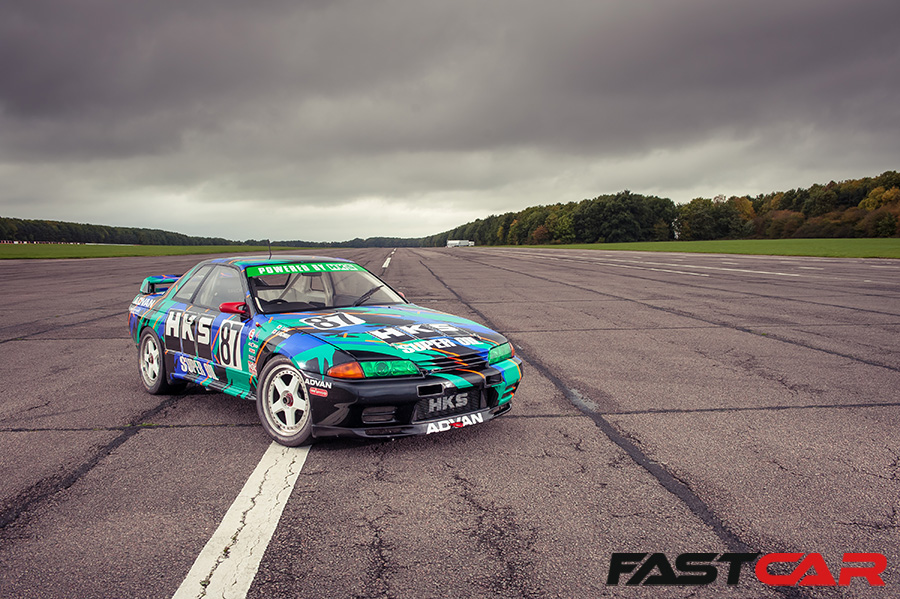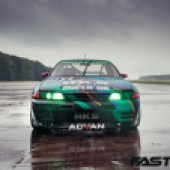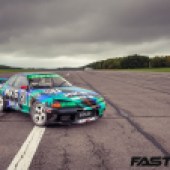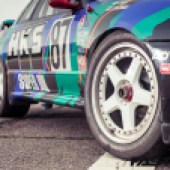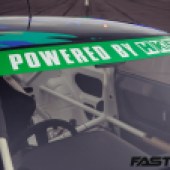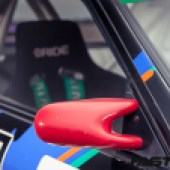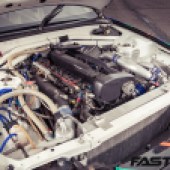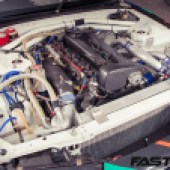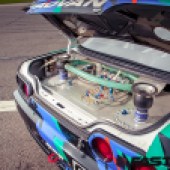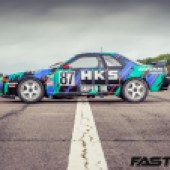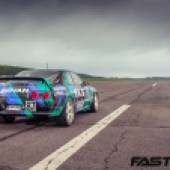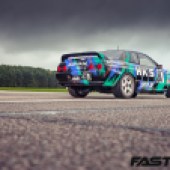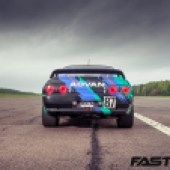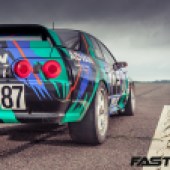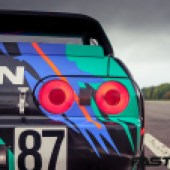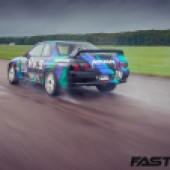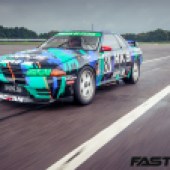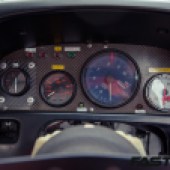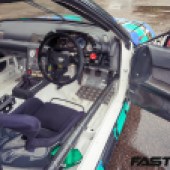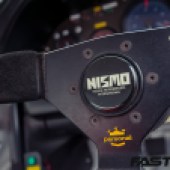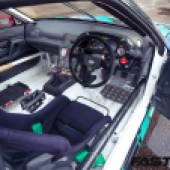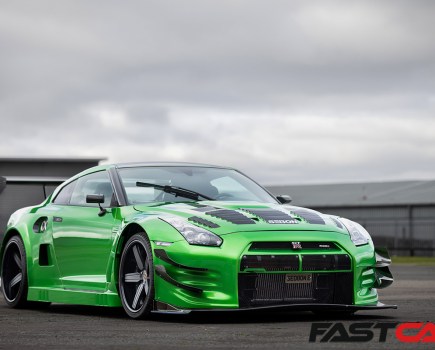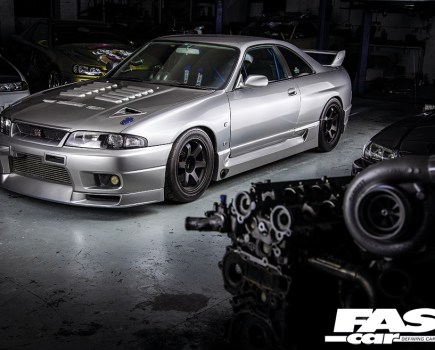You’re looking at a car that helped change motorsport in Japan forever. We get up close and personal with ‘Godzilla’; the HKS Group A Nissan Skyline R32 GT-R that launched a legend and helped HKS build a reputation as one of the finest tuning specialists in Japan.
Words: Dan Goodyer. Photos: Dan Sherwood.
When the Nissan Skyline R32 GT-R first shot to fame in the UK, it really caught our eye. Here was a car that was so fast there were rumours it had been banned from motorsport because it rendered its competition obsolete. A car nicknamed Godzilla. We loved the twin rear lights, the silky note of its straight-six engine and marvelled at the traction. It seemed like it was from another world. In performance terms, the R32 GT-R road car was ahead of its time. What really sparked our interest, however, was the effect tuning had on it.
The rewards were huge for whomever was clever or bonkers enough to fiddle with a car already considered fast enough. Tuning provided the key to unlock the R32 GT-R’s hidden personality. If the standard road car could be likened to Dr.Jekyll, then adding a larger exhaust, some more boost, a set of brake pads and some sticky tyres were enough to unleash Mr Hyde. Going further with forged engine internals, differentials and track suspension was akin to poking said lunatic with a stick. In short, it would destroy anything it came across.
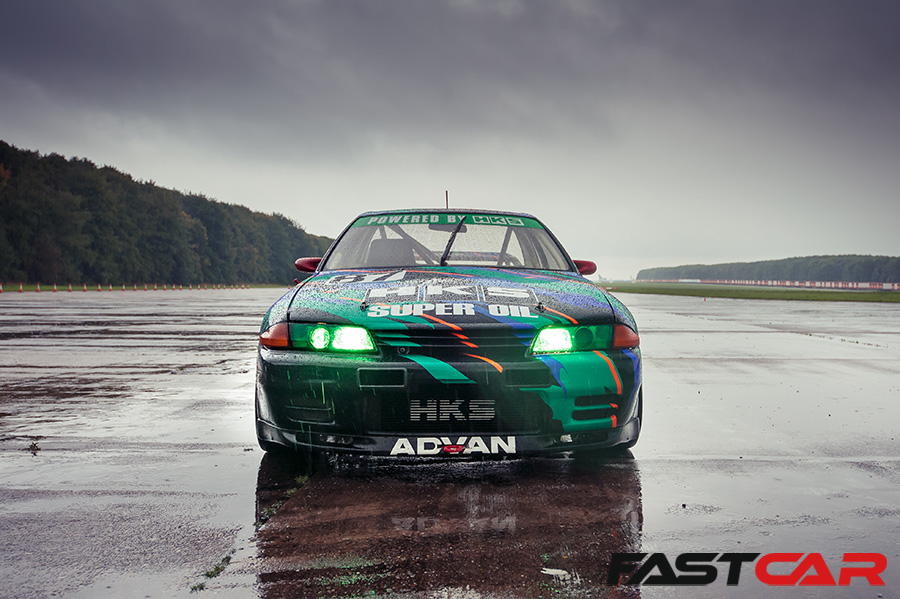
Which is exactly what happened on the racetracks of Japan. This exact car was built and raced by the famous HKS tuning company in Japan. At the time, they were a relatively small outfit with big ambitions. This car represents their brave first steps into the lion’s den. They decided to go head-to-head with factory-backed racing teams and established names from the motorsport world. This car entered a couple of races in 1992 as a test. It then went onto compete for the Group A Touring Car Championship in 1993.
We are introduced to the HKS Nissan Skyline GT-R R32 by HKS Europe Director, Masaya Yumeda. With some well-thumbed GT-R magazines from Japan and some inside information from HKS, Maz helped us uncover some fascinating facts about both this car and the GT-R in general. Including the story behind that distinctive HKS colour-scheme. As wells as how the GT-R ended up with the RB26DETT engine in the first place.
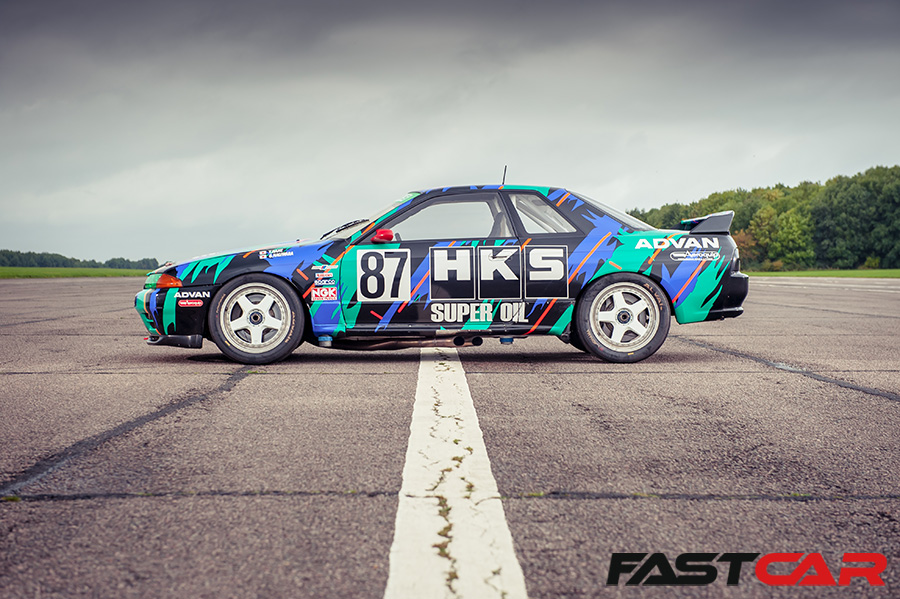
Let’s start with how the GT-R was designed, because it relates directly to this car. In short, Nissan designed the R32 GT-R road car to end up with the fastest Group A racecar possible. Nissan ensured the GT-R would destroy everything in its path in Group A and hopefully beyond. Which is exactly what it did. On the racetrack and on the street.
When the R32 GT-R hit Group A for the first time in 1990, it won. More specifically, a GT-R qualified on pole position before all-three podium places were filled by GT-Rs. The competing Sierra Cosworth RS500s and Mk3 Toyota Supras couldn’t get near them.
In fact, between 1990 and 1993 every single Group A Touring Car race in Japan was won by a an R32 GT-R. That’s an impressive run of 29 wins out of 29 races. During 1993, this HKS Nissan Skyline GT-R R32 took two pole positions and won at Sugo in Round 3. It turned heads in its début season. This was a car essentially built by a novice racing team with amateur drivers. How did they do it? How was the GT-R so dominant? Especially in a field that featured Sierra Cosworth RS500s and the like. Cars which were having such success in other parts of the world.
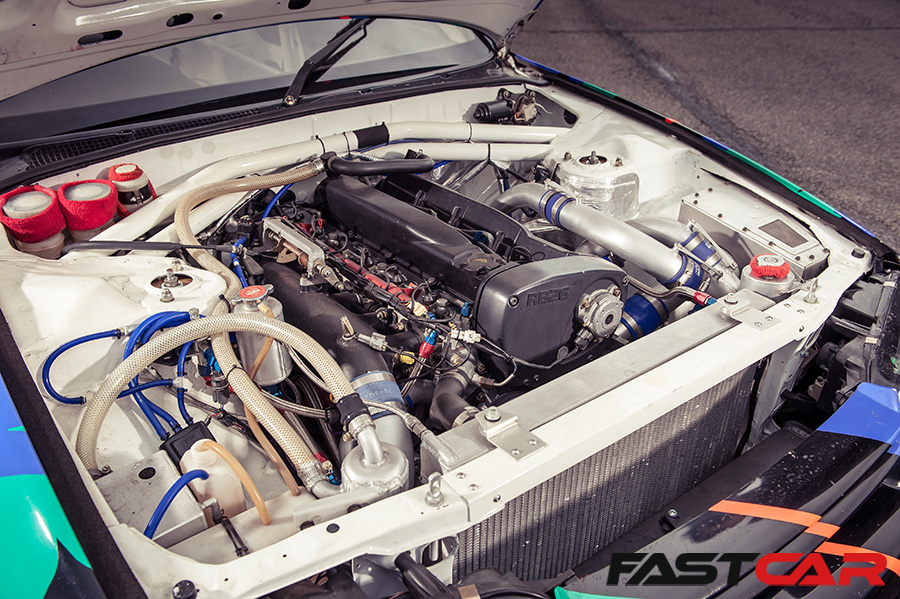
The answer lies in Nissan’s methodical dedication to those regulations. Take the tyre size for example. Every photo or video you see of these Group A monsters is dominated by those chunky slick tyres. They barely squeeze under the GT-R’s swollen arches, which are notably wider than the standard Skyline’s to cater for them. Even the hefty slick tyres on the car today look marginally smaller than the originals, as they are no longer produced.
Nissan wanted to use this huge tyre for maximum grip around the bends and under braking. The regulations at the time linked tyre size to engine capacity, meaning that to use the size they wanted, Nissan worked out the biggest engine they could use would be a 2.6-litre six-cylinder twin-turbo. So that’s what they built. The famous RB26DETT engine equipped to every R32, R33 and R34 Skyline GT-R can trace its capacity back to the tyre size used on this very car, and the others that shared that exciting Group A grid.
Of course Nissan’s four-wheel drive system; Advanced Total Traction Engineering System for All-Terrain (ATTESA), was made even more effective in the GT-R with the addition of Electronic Torque Split (E-TS). In short, the ATTESA E-TS gave power constantly to the rear wheels. A computer then took information from various sensors to send some of the engine power to the front wheels when the rears were struggling. It was this combination of grip and power that made the R32 Nissan Skyline GT-R such a formidable road car, and an unbelievable base for tuning. Adding mechanical differentials, an E-TS controller and slick tyres to the mix took this car’s performance capabilities to places its rear-wheel drive competition simply couldn’t follow.
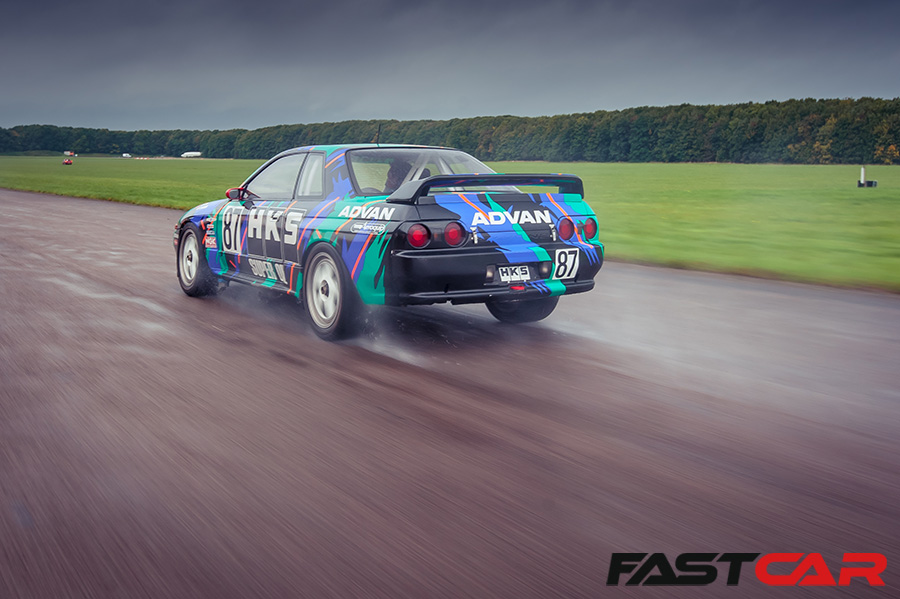
During the Group A era, all modifications had to be signed off by the FIA. During 1990 and 1991, all the cars were very similar in specification. They featured those mechanical Nismo differentials, identical H-pattern straight-cut gearboxes and either Bridgestone or Dunlop tyres. Competition amongst the GT-R teams was fierce.
Each team had one car shared by two drivers, and among the stars of the All Japan series was the STP Taisan team in their red and black GT-R. They had the famous Kunimitsu Takahashi mentoring a young Keiichi ‘Drift King’ Tsuchiya. While the blue car, often described as the ‘Calsonic’ car, was actually entered by the Impul race team, created by ex-Formula One driver Kazuyoshi Hoshino. Hoshino shared the driving and won the first Group A title in 1990, while Formula Two Champion Masahiro Hasemi won the 1991 Group A title in his own Hasemi Motorsport team, sponsored by Unisia JECS.
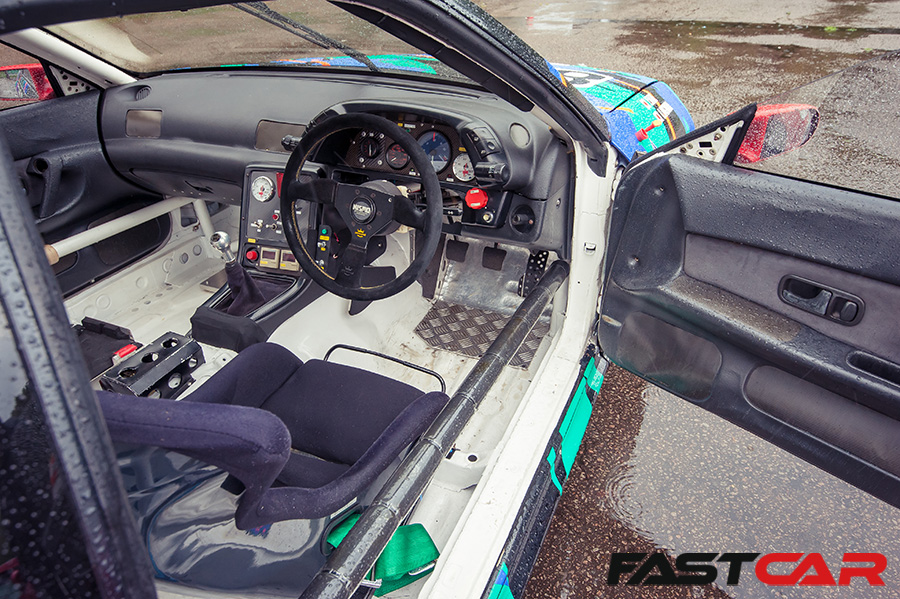
Hasemi had also competed in one Formula One race, and it’s worth pointing out the young talent the series was attracting too. In 1992 a young Tom Kristensen co-drove the Trampio car, initially sponsored by Axia and then later by BP. Danish driver Kristensen would go on to win the 24 Hours of Le Mans a record nine times! As we say, the All Japan Group A Touring Car Championship at that time attracted the best drivers and engineers in Japan and beyond. Crowds of up to 50,000 fans cheered on the drivers at every race. This was a golden era of motorsport and puts HKS’s brave decision to enter a race in 1992 into context. This was a high-profile gamble.
Although HKS had been a successful engine specialist since 1973, and would later go on to all manner of motorsport achievements, most notably in the world of drag racing, this was arguably the moment those three letters became famous. Those couple of races in 1992 were a test, to gather information for a full year in 1993. The car featured a strange colour scheme of green and orange with blue highlights. It was quickly apparent that the competition were extremely fast. The HKS car was not embarrassed, but it was marginally off the pace of the front-runners, which is understandable when you consider those teams had a couple of years’ development under their belts and former F1 drivers behind the wheel. HKS got to work.
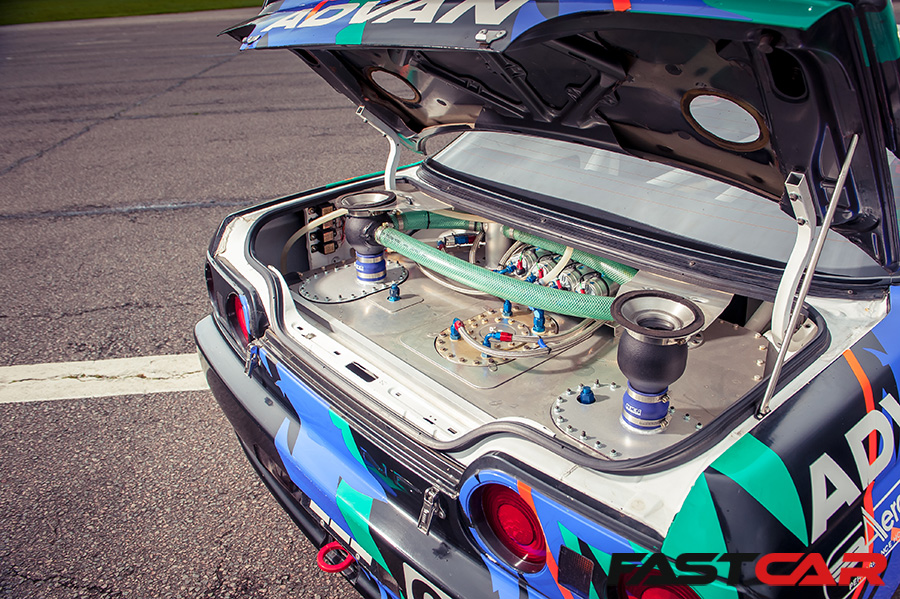
Back at their headquarters, the work really began. Nissan GT-R engines were tuned and tested to destruction, in the aim of making every last drop of horsepower possible. The regulations stated some most of the original engine parts had to be retained, including the engine block, crankshaft, connecting-rods, cylinder head and turbochargers. Doesn’t appear to leave much room for tuning, does it?
Which probably explains why every car in the field used a Nismo-spec engine built by Reinik, a company with close links to Nismo. Reinik went on to build the 2.8-litre RB-X GT2 engine in the R33 Nismo 400R for example. However, in Group A in 1993, all the factory engine parts could be machined. While the camshafts could be replaced and the original ECU could be re-flashed. With the regulations so tight elsewhere, engine tuning was the main way teams could gain an advantage over their rivals. The thing is, the grid was packed with motorsport teams buying Reinik engines, not engine builders. This gave HKS an opportunity to demonstrate their engine tuning skills to a wider audience.
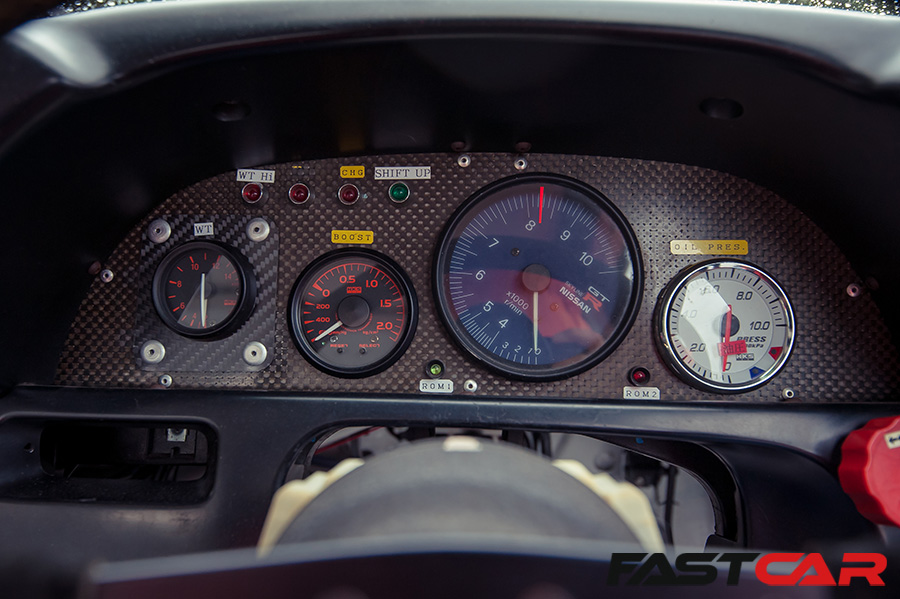
They blew an engine or two on the dyno, testing where the safety margins were. They experimented with machining the engine block, lightening and balancing the bottom-end, cutting the blades on the turbochargers. The only thing these HKS engines shared with the Reinik engines was the Nismo pistons. HKS even developed a special oil for the car. Masaya explains: ‘It was very thin, like a vegetable oil. It was a one-race oil that had to be replaced every time the car ran, it was called 087. HKS has always considered engine oil to be a tuning part. Less friction gives you greater power. Our philosophy is that the oil is as much an engine tuning part as a crankshaft or piston. If you’re going to tune the engine, tune the oil as well.’
Masaya continues: ‘During testing, the engineers claimed to see an improvement of three or four horsepower with the oil. That might not sound a lot but it was protecting the engine properly too, and in a class when tuning is restricted in this way, the team felt that extra few horsepower made a difference.’ In recognition of the oil, every HKS racing car has carried the number 87 ever since. The famous colour-scheme on this car was originally copied from the design on the 087 oil cans and is commonly referred to as ‘the oil colours.’
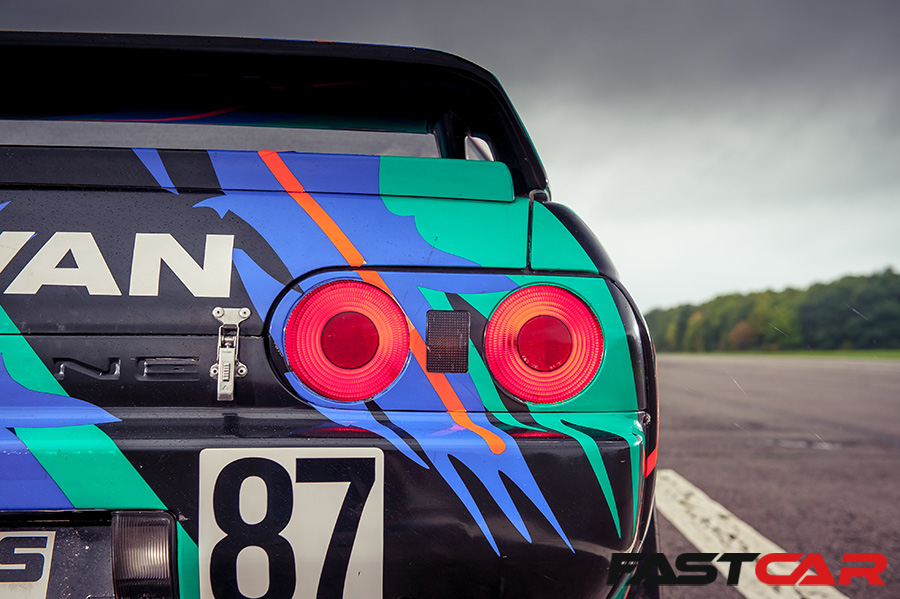
It wasn’t just the oil that needed changing after every run either. These were highly-strung cars being pushed to the very edge. Nissan had designed the road car to suit the Group A regs, the teams were then pushing the modified versions to the absolute limits, in the battle to be fastest. After each run the HKS car was stripped of its engine, gearbox, front and rear diffs, uprights and driveshafts. The rate at which these small teams of men were able to rebuild and refresh these cars was as impressive as the driving on the track.
When the 1993 season began, the HKS car was ready. It quickly earned a reputation for having a strong engine. Rumours surfaced that Nismo even asked HKS to calm down on the tuning, although this is something that HKS boss at the time, Akihito Mochizuki, denied in public. The HKS car was immediately on the pace but it wasn’t until Sugo in Round 3 that it really shone. The long straights at Sportsland Sugo allowed the HKS car to really stretch its legs. The team qualified in pole position and set a new lap record by 0.7 seconds. Then went on to win the race. An incredible achievement for a relatively novice team up against an all-star field.
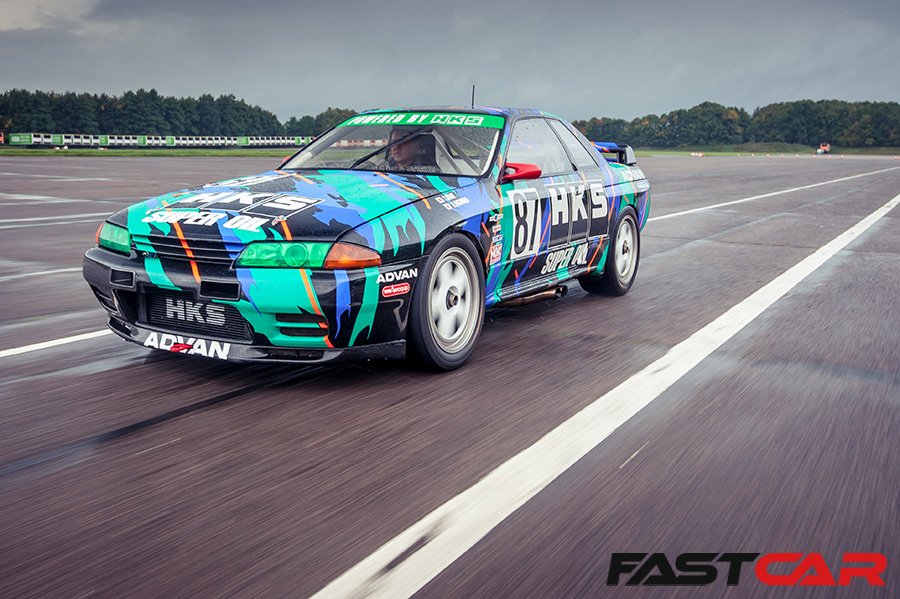
There was further success too, proving HKS could also tune the car for short tracks, as this car qualified on pole position at Tsukuba in Round 6. A track where years later the HKS CT230R Lancer Evolution would hold the Time Attack lap record for many years. Unfortunately, when the race began, the HKS GT-R was taken out by the Impul machine on the first lap. Later in the year at Round 7, the HKS car came through the field to finish on the podium. A feat it repeated in Round 8, where it finished in second place.
By the end of 1993, the All Japan Group A Championship was sadly brought to an end, eventually replaced by the Japan Touring Car Championship using the FIA ‘Super Tourer’ regs instead, which left the R32 no longer eligible to compete. It was a sad moment in history, but HKS had already proved their point. They had demonstrated they were capable of taking on Nismo and Reinik head-on, as well as the established big names in Japanese motorsport. They had opened the eyes of all those thousands of fans to the three letters H, K, S. The rest, as they say, is history.
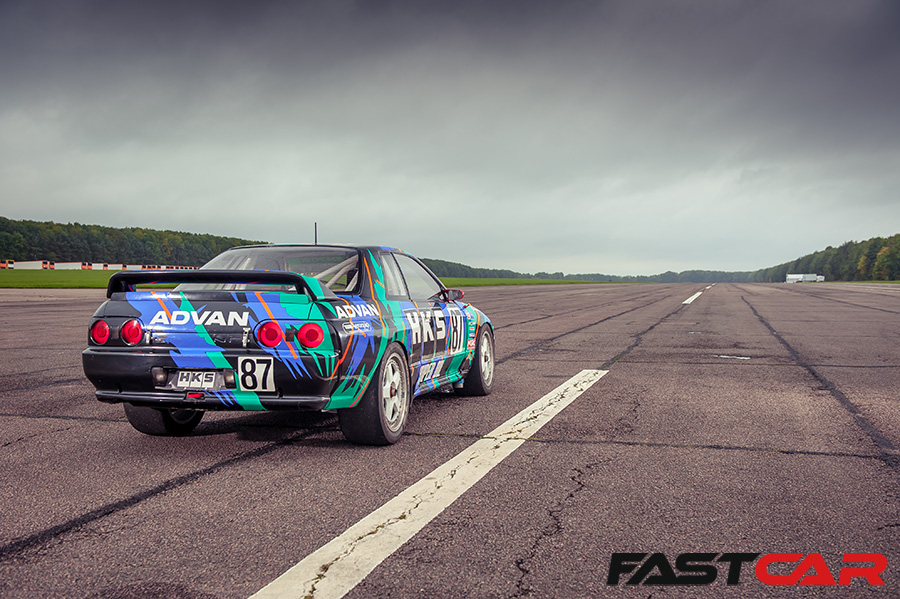
HKS Group A Nissan Skyline GT-R R32 images
Group A (All Japan Class 1) Specs
The Group A GT-R was essentially a stripped-down and boosted-up version of the road car. With no aero to speak of, weighing 1260kg and with 600-650bhp to play with depending on the boost setting, they were animals to drive. The tyres and suspension were so stiff these cars would bounce around the track, often only millimetres apart. What made the task even more difficult was the huge 120-litre fuel tank in the boot. When this was full it made up around 10% of the car’s overall weight, meaning there was a huge shift in the balance of the car throughout the race, as the greedy engine gulped it down.
Godzilla roars!
One dominating part of this GT-R’s character is the straight-through, side-exit exhaust. With a pipe for each turbo, it’s loud and obnoxious and often popped huge flames when changing gear, as unburned fuel shot out of the exhaust valves and ignited against the hot metal interior of the pipes. Originally believed to have had a titanium system in the same design, stainless steel pipes were used with HKS elbows and downpipes during the rebuild. At a recent noise test, it made an ear-splitting 122dB while stationary at 6,000rpm. Just imagine how loud it is at full boost and over 8,000rpm!
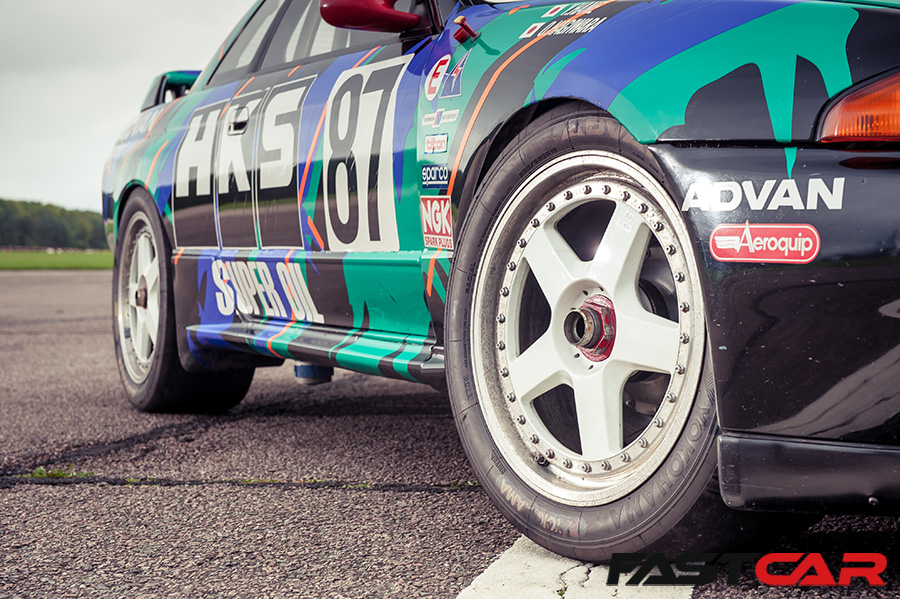
Tyres and Drivers
All HKS competition and demo cars wear Yokohama Advan tyres where possible. Initially Group A teams had a choice of Bridgestone and Dunlop slicks, with Toyo entering shortly after, but when HKS entered the series, they used Yokohama tyres as did some of their rivals. As a result, Yokohama-shod cars qualified on pole and took the win at the first three rounds of the 1993 season. One of the HKS drivers was Osamu Hagiwara. He worked for Yokohama at the time, and was a keen amateur rather than a professional racing driver. His racing career began in Formula 3 in 1990 and ended with the ’93 season in the GT-R. Interestingly, he went on to become a wheel designer for Advan, his first creation being the Super Advan Racing wheel in 1995.
Tech Spec: HKS Nissan Skyline GT-R R32
Engine:
2,568cc, 6-cyl, 24v twin-turbo RB26DETT, 86mm bore x 73.7mm stroke, 8.5:1 compression ratio, machined block, lightened and balanced OEM bottom-end by HKS, Nismo forged pistons, HKS custom camshafts, re-flashed OEM ECU by HKS, OEM turbochargers machined by HKS, HKS turbo elbows and downpipes into side-exit straight-through Titanium exhaust, 120-litre fuel tank mounted in boot, 4x Bosch 044 fuel pumps, Earl’s fuel lines, stainless steel mesh air filter, OEM spec front-mounted intercooler, Calsonic radiator, engine oil cooler (After 2010 Rebuild) HKS F-Con V Pro ECU, HKS EVC V boost controller, HKS billet crankshaft, HKS con-rods, HKS forged pistons, prototype cams and turbos designed to replicate the performance of the time, HKS turbos, HKS turbo elbows and downpipes into straight-through stainless-steel side-exit exhaust, HKS Superpowerflow air filter, HKS intercooler and pipework, TRAD radiator, HKS oil cooler
Transmission:
Hollinger 6-speed H-pattern straight-cut gearbox, (In 1993) Tilton triple-plate clutch, (After 2010 rebuild) HKS triple-plate clutch, Nismo mechanical differentials, electronic ATTESA E-TS controller, Nismo gearbox and differential oil coolers (in 1993 – now removed) Group A driveshafts replaced with OEM items
Suspension:
(In 1993) Compulsory KYB damper with various spring rates, Nismo rose-jointed arms, Nismo reinforced subframes, Group A anti-roll bars, (After 2010 Rebuild) HKS Hipermax III coilovers valved to match KYB damper, modern Nismo arms
Brakes:
(In 1993) Alcon 6-pot brakes on front, AP Racing 4-pot brakes on rear
(After 2010 Rebuild) AP 4-pot brakes all round with 355mm discs
Wheels & Tyres:
(In 1993) Centre-lock 18in Advan split rims, (After 2010 Rebuild) Enkei centre-lock wheels to match originals wrapped in Yokohama Advan A005 slick tyres
Exterior:
OEM R32 GT-R bodykit, Nismo bonnet and boot lips, aero door mirrors, polycarbonate side and rear windows, HKS ‘Oil Colours’ race livery
Interior:
Personal steering wheel, bucket seats, rollcage, various gauges including boost pressure, oil pressure and oil temperature, custom dashboard insert with fuel and ignition cut-off switches, E-TS adjuster, inner door panels changed to non-GT-R model
Thanks:
HKS Europe
(01480) 431604

